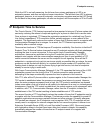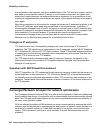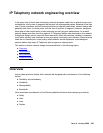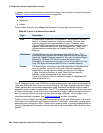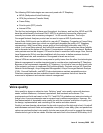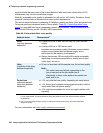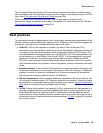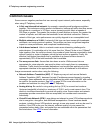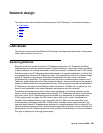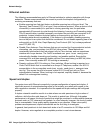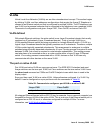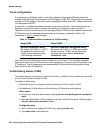
Voice quality
Issue 6 January 2008 285
The following WAN technologies are commonly used with IP Telephony:
● MPLS (Multiprotocol Label Switching)
● ATM (Asynchronous Transfer Mode)
● Frame Relay
● Point-to-point (PPP) circuits
● Internet VPNs
The first four technologies all have good throughput, low latency, and low jitter. MPLS and ATM
have the added benefit of enhanced QoS. MPLS is a relatively new service offering and
currently has issues with momentary outages of 1 to 50 seconds duration. The Avaya
Converged Network Analyzer product can be used to improve MPLS performance.
Frame Relay WAN circuits can be difficult to use with IP Telephony. Congestion in Frame Relay
networks can cause frame loss, which can significantly degrade the quality of IP Telephony
conversations. With Frame Relay, proper sizing of the committed information rate (CIR) is
critical. In a Frame Relay network, any traffic that exceeds the CIR is marked as discard eligible,
and is discarded at the option of the carrier if it experiences congestion in its network. Because
voice packets must not be dropped, CIR must be sized to maximum traffic usage. Also, Service
Level Agreements (SLAs) must be established with the carrier to define maximum levels of
delay and frame loss, and remediation if the agreed-to levels are not met.
Internet VPNs are economical but more prone to quality issues than the other four technologies.
Network management is another important area to consider when implementing IP Telephony.
Because of the requirements imposed by IP Telephony, it is critical to have an end-to-end view
of the network, and ways to implement QoS policies globally. Products such as HP OpenView
Network Node Manager, Avaya Integrated Management, Avaya Converged Network Analyzer
(CNA), Concord NetHealth, and MRTG help administrators maintain acceptable service.
Outsource companies are also available to assist other companies that do not have the
resources to implement and maintain network management.
Voice quality
Voice quality is always a subjective topic. Defining “good” voice quality varies with business
needs, cultural differences, customer expectations, and hardware and software. The
requirements set forth are based on the ITU-T and EIA/TIA guidelines and extensive testing at
Avaya Labs. Avaya requirements meet or exceed most customer expectations. However, the
final determination of acceptable voice quality lies with the customer’s definition of quality, and
the design, implementation, and monitoring of the end-to-end data network.
Quality is not one discrete value where the low side is good and the high side is bad. A trade-off
exists between real-world limits and acceptable voice quality. Lower delay, jitter, and packet loss
values can produce the best voice quality, but also can come with a cost to upgrade the network
infrastructure to get to the low values. Another real-world limit is the inherent WAN delay. An IP



